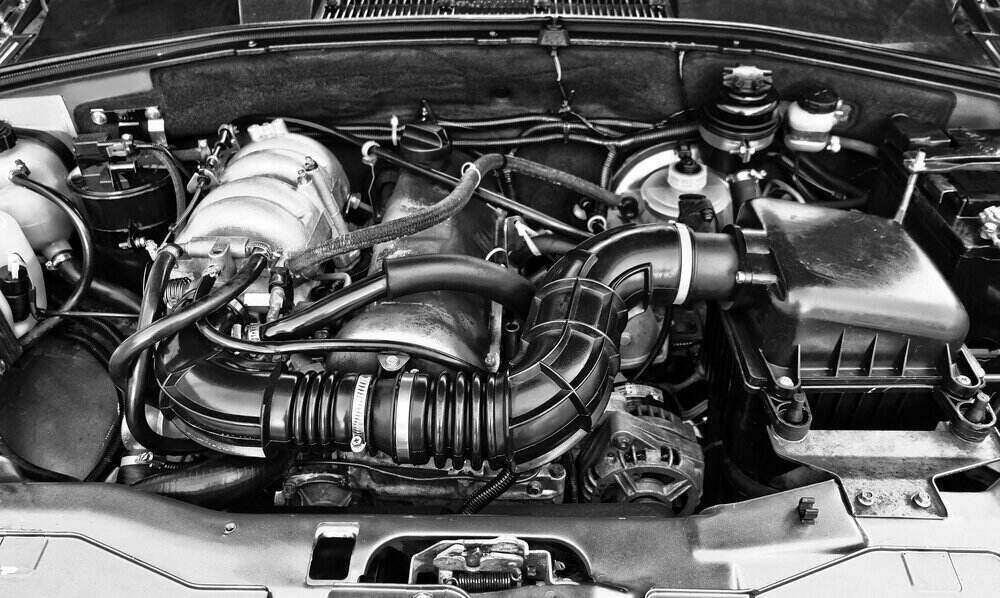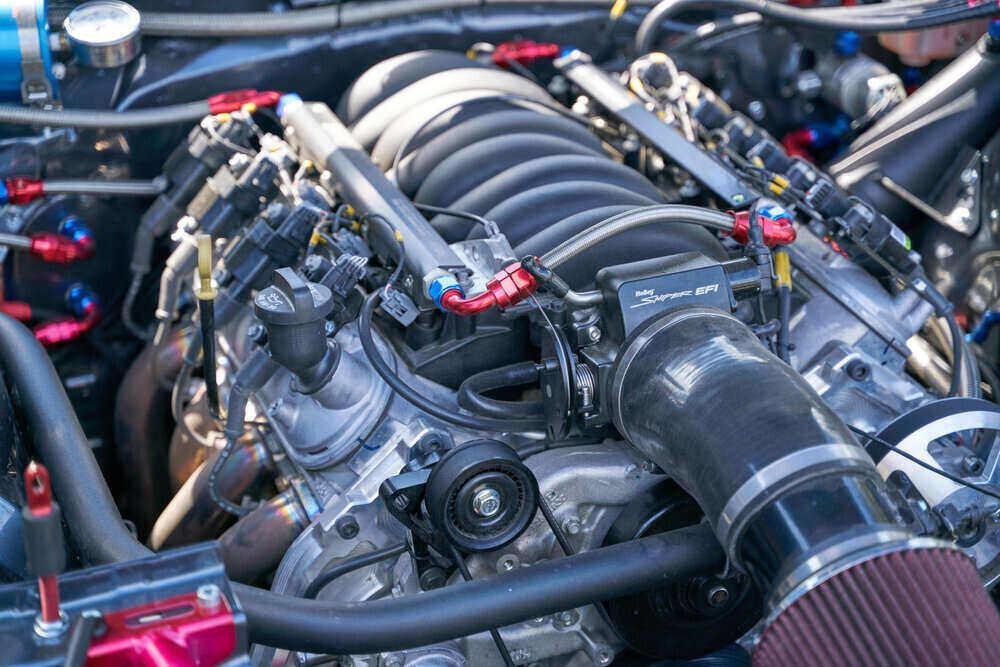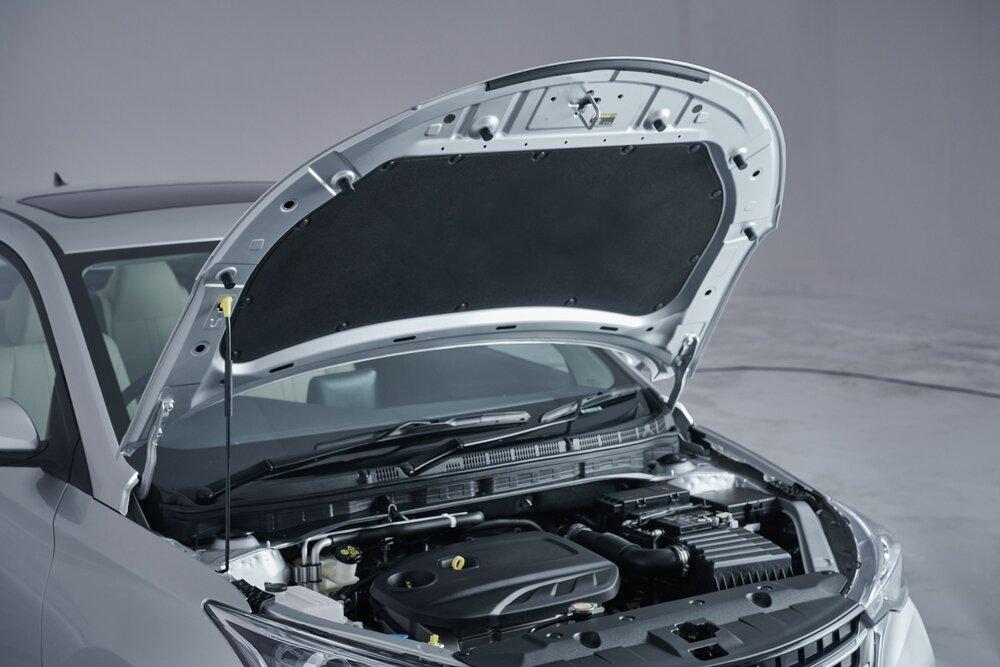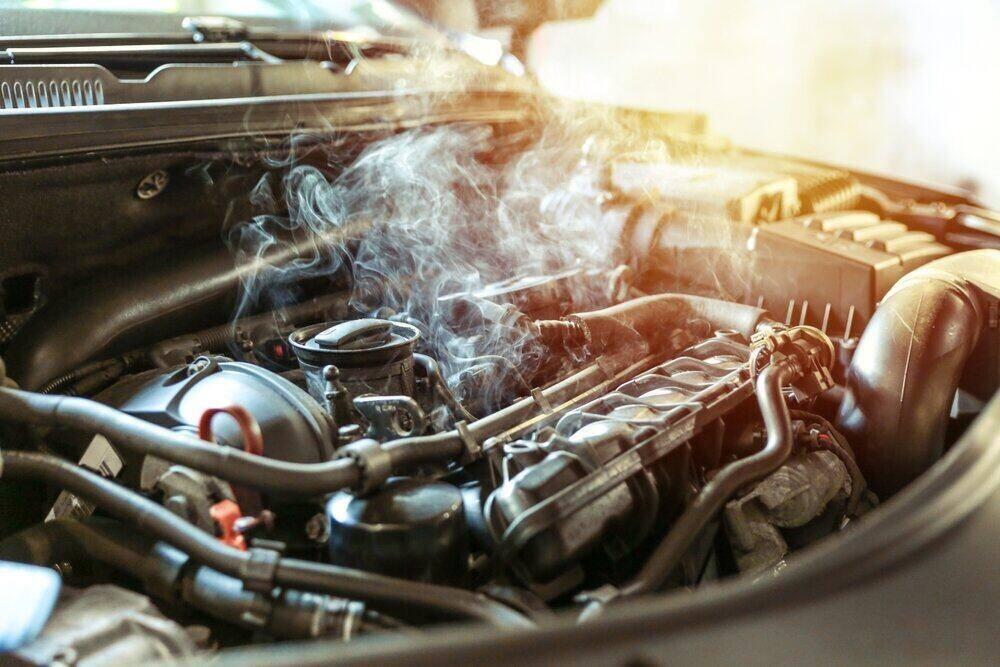- How to Transport an Engine Safely Tips and Tools You Need
- Gathering the Necessary Equipment for Engine Transport
- Choosing a Suitable Trailer and Truck
- Selecting Equipment Hoist, Jack, or Dolly?
- Preparing the Engine for Safe Transport
- Draining Fluids
- Securing Loose Components
- Protecting Sensitive Components
- Procedures for Securely Loading the Engine
- Positioning the Engine in the Transport Vehicle
- Positioning the Engine Tips and Considerations
- Safely Transporting the Engine Best Practices
- Monitoring During Transit
- Consider Professional Auto Transport Services

How to Transport an Engine Safely: Tips and Tools You Need
Transporting an engine safely calls for meticulous preparation and specific tools. Heavy-duty straps, ropes, and padding materials are critical for securing the weighty load and preventing possible damages. More than just a trailer with enough space, considering its load capacity and compatibility with your truck safeguards against potential transit mishaps. Surprisingly, keen attention must also be paid to fluids that could possibly leak from the engine during the transportation process; having absorbent materials handy mitigates this worry. With all this in place, you’re ready to get started on your engine transport journey.
The best way to transport an engine is by securing it with heavy-duty straps or ropes in the bed of a pickup truck. Place the engine close to the front of the bed for minimal movement during collisions and use ratchet straps around the engine, attaching them to the corners of the truck bed to prevent shifting. Always ensure that any fluid leaks from the engine are cleaned up to prevent sliding on the bedliner.
Gathering the Necessary Equipment for Engine Transport
When it comes to moving an engine, you need some specialized and sturdy tools to get the job done right. Heavy-duty straps, ropes, and padding material are at the top of the list. These are like the superhero capes of engine transport—they're there to protect, secure, and save the day.
The heavy-duty straps and ropes need to be in top condition—no wear and tear allowed. Make sure to inspect them thoroughly before using, checking for any signs of weakness or damage that could compromise their integrity. It's important to keep in mind that an engine can weigh quite a it's important to lot, so it's important to use heavy-duty straps or ropes instead of regular ones. You want your engine to stay snug and secure throughout the journey.
Some people have used heavy plastic bins, furniture blankets, or tarps to pad and protect the engine transportation. Additionally, having absorbent materials is critical to address potential fluid leaks from the engine. These materials will help prevent any oil from leaking out and causing a mess during transport.
And then there's protective gear. Imagine moving a bunch of heavy stuff without gloves—it would be like trying to catch a fish with your bare hands; slippery and risky. But if you have some good heavy-duty gloves, you'll have a much better grip on things and avoid accidents.
Gathering all these tools might seem like a hassle, but they are important for safeguarding both you and your engine during transportation. Each tool plays a key role in ensuring a safe and secure journey for your valuable cargo.
As we amass the necessary equipment for safe engine transportation, let’s now shift our focus towards selecting the most appropriate trailer and truck for this essential task.

Choosing a Suitable Trailer and Truck
When it comes to safely transporting an engine, the choice of trailer and truck is critical. You need to find a setup that not only fits the dimensions and weight of the engine but also ensures stable and secure transportation.
First, you need to consider the towing capacity of your truck. Different trucks have different maximum towing capacities, so it's important to know the limits of your vehicle. Check your truck's manual or look up the towing capacity online to ensure that it can handle the weight of the engine along with the trailer.
For example, a Ford F-150, depending on its model and configuration, has a towing capacity ranging from 5,000 – 13,200 lbs, while a Chevrolet Silverado can tow between 9,300 – 13,400 lbs.
Next, consider the trailer hitch weight ratings for various trailer types. Flatbed trailers, enclosed trailers, and other types each have their own weight constraints. It's important to match the type of trailer with the weight of the engine and ensure that the hitch on both the truck and trailer is rated for that weight.
For instance, an enclosed car hauler trailer might have a higher weight rating compared to a utility trailer due to its structural design and purpose.
Measure the dimensions of the engine to ensure it fits securely on the trailer. The length, width, and height of the engine will determine how it should be placed on the trailer to maintain stability during transit. Make sure there is enough space around the engine to properly secure it in place.
For particularly large or heavy engines, specialized trailers equipped with ramps, winches, or other features specifically designed for transporting heavy machinery might be necessary.
In addition to ensuring that the trailer can accommodate the engine, it's important to verify that the connections between the truck and trailer are secure. This includes checking the trailer hitch and all electrical connections for signs of wear or damage. Ensuring that everything is in good condition will help prevent any unexpected mishaps during transit.
Choosing a suitable trailer and truck for engine transport is critical for safe and stable transportation. By considering factors such as towing capacity, trailer hitch ratings, and dimensions of the engine, you can ensure a smooth journey for your valuable cargo.
Now, let's explore the options for moving an engine from point A to point B with different equipment—hoist, jack, or dolly.
Selecting Equipment: Hoist, Jack, or Dolly?
When it comes to transporting an engine, choosing the right equipment is fundamental for a smooth and secure process. The most common tools for this job are an engine hoist, a jack, or a dolly. Each has its own pros and cons, and the one you choose should depend on your specific needs and the circumstances surrounding the transportation process.
An engine hoist, also known as an engine crane, is a versatile piece of equipment that can lift and lower heavy objects with precision. Its tall, sturdy frame provides the necessary support to handle large weights, making it ideal for lifting engines in and out of vehicles. It ensures minimal impact on the engine's integrity during the loading and unloading process. Most hoists have a weight capacity of up to 2 tons, providing ample strength for most engine types.

A jack is a more compact tool commonly used to elevate vehicles during tire changes or other maintenance tasks. However, when used with care, a jack can also facilitate the loading and unloading of an engine onto the transport vehicle. It's important to verify that the jack's weight capacity aligns with that of the engine to ensure safe lifting.
A dolly can be incredibly helpful when maneuvering heavy items like an engine within a workspace. It often features four wheels and a flat platform that supports the object being moved. When utilized in combination with suitable securing mechanisms, a dolly can help safely transfer the engine onto the transport vehicle without causing damage.
Regardless of which equipment you choose, it's important to prioritize safety at all times. This means ensuring that the weight limits of these tools are not exceeded and using them in accordance with their intended purpose. Properly securing the engine during transport using ratchet straps or ropes should also be a top priority.
Additionally, using an engine cradle can provide an added layer of security during transportation. Engine cradles are specifically designed to support engines and keep them stable during transit. They come in various styles and sizes to accommodate different types of engines.
By carefully considering your specific needs and understanding how each piece of equipment can aid in the safe transportation of your engine, you can make an informed decision regarding which tool will best suit your requirements.
Preparing the Engine for Safe Transport
Before you load the engine up for a journey, it's important to take into account that engines have a lot of parts and pieces that can get damaged if they're not taken care of properly. Securing an engine properly before transport involves important steps beyond just strapping it down.
Draining Fluids
One of the first things you need to do before transporting an engine is to drain all the fluids. This includes the oil, coolant, and any other fluids in the engine. Fluids can leak during transit, making a mess and possibly causing damage to your vehicle or trailer. To avoid this, make sure to drain all the fluids completely and clean up any spills. This step not only protects your engine but also ensures a cleaner and safer transport.
Securing Loose Components
An engine has many parts that are sensitive and could get damaged if they move around too much during transport. So, securing those loose components is key. Wrap delicate parts such as wiring harnesses with padding materials, keeping them protected from bumps and vibrations. Also, consider removing detachable parts like the alternator or starter if needed and pack them separately. Labeling these components will help you during reassembly at the destination and prevent confusion.

Protecting Sensitive Components
In addition to securing loose components, it's important to protect sensitive components from potential damage. You could use heavy-duty straps or ropes instead of regular ones to ensure everything stays in place during transit. For added protection, consider using moving blankets or foam padding to wrap delicate parts. Remember, taking extra care now can save you a lot of trouble later down the road.
Failing to ensure each part is safely secured could result in damage during transport - something no one wants after investing so much time and effort into getting it packed up.
There are several essential tasks involved when preparing an engine for transport; by following these simple tips, you'll ensure that your engine arrives at its destination safely and without damage.
Procedures for Securely Loading the Engine
Loading an engine onto a transport vehicle should be approached with care and caution to ensure it remains stable throughout the journey. The position, anchoring, and handling of the engine are critical aspects that demand attention during this phase of the transportation process.
Positioning the Engine in the Transport Vehicle
Positioning the engine in the transport vehicle's bed or designated area requires thoughtful planning and precise execution. it's important to consider weight distribution within the vehicle and the securement points for straps or restraints. Placing the engine towards the rear of the truck bed can help resist emergency braking forces, while positioning it close to the front can minimize movement during collisions. Proper weight distribution and balance are vital to prevent tilting or tipping during transit.
Anchoring and securing the engine is another critical step in this process. Using suitable equipment such as heavy-duty tie-down straps, ropes, or chains is paramount for ensuring a stable and immovable position for the engine. Adequate tension should be applied to these securing elements to prevent any shifting or movement.
For instance, utilizing ratchet straps around the engine and attaching them to the corners of the truck bed can effectively prevent shifting or tipping during transit. Heavy-duty tie-down straps or ropes should be used instead of lighter ones to account for the weight and force exerted by the engine.
In addition to securement devices, proper lifting techniques play a significant role in safely loading the engine onto the transport vehicle. When lifting the engine into place, using an engine hoist is recommended as it allows for controlled vertical movement and positioning. Ensuring that the engine is lifted evenly and guided carefully to its designated spot minimizes the risk of damage or instability.
Successfully executing these procedures guarantees that the engine is loaded securely onto the transport vehicle, ready for safe transit. These meticulous steps and considerations are essential for safeguarding both the engine itself and other occupants on the road.

Positioning the Engine: Tips and Considerations
When it comes to transporting an engine, proper positioning is important for ensuring a safe and stable journey. The way you position the engine in your vehicle significantly affects its balance, stability, and overall safety during transit.
First and foremost, it's important to distribute the weight of the engine evenly within the transport vehicle. This not only helps maintain a balanced load but also prevents unnecessary strain on specific parts of the vehicle, reducing the risk of tipping or imbalance during transport.
Placing the engine as close to the front of the bed or designated area as possible is a smart move. This strategic placement minimizes movement during sudden stops or collisions, especially critical when considering the force and weight of the engine. It also provides better leverage for controlling and steering your vehicle.
Additionally, strategic placement ensures optimal weight distribution for safe transport, avoiding excessive pressure on one side or area of your transport vehicle, which can lead to unnecessary strain on the chassis and suspension system.
Just like preparing a pizza with perfectly distributed toppings ensures even cooking, distributing the weight of the engine evenly will help maintain balance and stability throughout the journey.
As we can see, positioning an engine properly isn't just about fitting it into a space; it's critical for maintaining balance, stability, and safety during transport.
Safely Transporting the Engine: Best Practices
Once the engine is secured in place, it's important to double-check all securing mechanisms and overall load distribution before embarking on your journey. Even if you think everything is locked down tight, an additional inspection can prevent any mishaps while on the road.
Inspecting your securing mechanisms: Every strap, rope, or tie-down should be taut without any slack that might allow movement during transit. It's wise to give each one a little extra tug to ensure they are as secure as possible.
Balancing your load: If you're carrying other equipment along with the engine, ensure that the weight is distributed evenly to maintain balance and stability. Uneven weight distribution can lead to swaying and potentially dangerous driving conditions. Remember, safety should never be compromised for convenience.
In addition to the security of your load, safe driving practices play a pivotal role in ensuring a smooth and secure engine transport. Maintaining an appropriate speed while following recommended routes is essential for maximizing safety during transit.
Safe Driving Practices: Excessive speed can cause uneven weight distribution and increase the risk of accidents. By adhering to speed limits and driving cautiously around corners and turns, you minimize the chance of unexpected shifts in the engine's position.

Monitoring During Transit
An overlooked but fundamental aspect of safely transporting an engine is monitoring its condition during transit. Even if everything seems secure before setting off, road conditions can vary from smooth highways to bumpy backroads. it's important to keep an eye on the engine for any signs of movement or shifting while en route.
If you encounter potholes, sudden stops, or uneven roads, pull over at a safe location to inspect the engine and its securing mechanisms. Addressing these issues promptly ensures that any potential problems are mitigated before they escalate.
Consider Professional Auto Transport Services
If transporting your engine seems daunting or simply not feasible for your situation, professional auto transport services offer a viable solution. Reputable providers with experience in handling engine shipments can provide added peace of mind knowing that experts are overseeing the transport. Their familiarity with securing delicate cargo ensures that your engine arrives at its destination intact.
These service providers employ specialized equipment and techniques to safeguard engines during transportation. From custom crating to secure tie-down methods tailored specifically for engines, their expertise mitigates the risk of damage or shifting during transit.
By closely adhering to these best practices and taking precautions to monitor your cargo during transit, you safeguard your engine’s integrity and ensure a worry-free transport experience.
Safely transporting an engine requires meticulous attention to detail and adherence to critical safety measures. By prioritizing these factors, you can guarantee a smooth and secure journey for your engine.







 Share on Facebook
Share on Facebook Share on LinkedIn
Share on LinkedIn Share on Twitter
Share on Twitter




 Google
Google  Instagram
Instagram  YellowPages
YellowPages  Trustpilot
Trustpilot 




